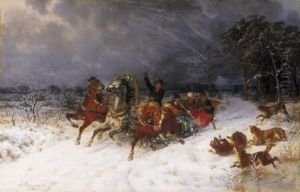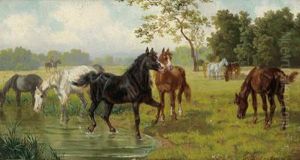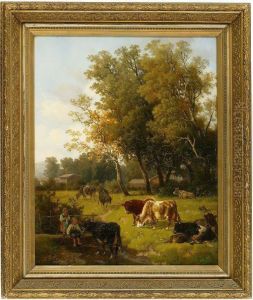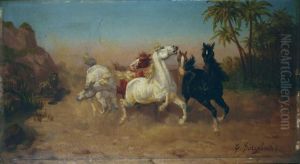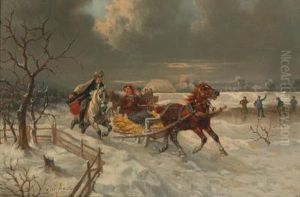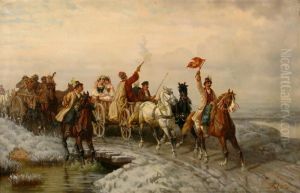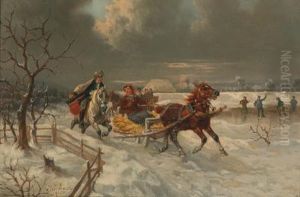Eduard Gotzelmann Paintings
Eduard Gotzelmann was a German painter born on June 22, 1801, in Münnerstadt, Bavaria. Although not as widely recognized as some of his contemporaries, Gotzelmann made a significant contribution to the art world during the 19th century. His work primarily consisted of religious themes and portraits, which were common subject matters in the art of that period.
Gotzelmann received his artistic training at the Academy of Fine Arts in Munich, which was a leading institution in Germany for the arts. The academy was known for its rigorous program that produced many skilled artists who would go on to shape the artistic landscape of Germany and beyond. Gotzelmann's education would have included drawing, anatomy, and the study of classical sculptures and paintings, which were considered essential for the formation of an artist.
Throughout his career, Gotzelmann worked on various commissions, including altarpieces for churches and portraits for private patrons. His style was influenced by the predominant art movements of his time, including Neoclassicism and Romanticism, which were characterized by a return to classical forms and a focus on emotion and individualism, respectively.
Eduard Gotzelmann's impact on the art world continued through his teaching. He shared his knowledge and skills with a new generation of artists, thereby influencing the course of German art. Despite the fact that his name may not be as celebrated as some of his peers, his work still provides insight into the artistic trends and cultural values of 19th-century Germany.
Gotzelmann's life and work were cut short when he died on September 27, 1866, in Würzburg, Germany. His death marked the end of a career that, while perhaps not achieving the fame of some of his contemporaries, contributed to the rich tapestry of German art history. Today, his works can be found in various collections and continue to be studied for their historical and cultural significance within the canon of German art.
